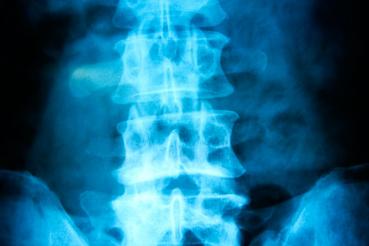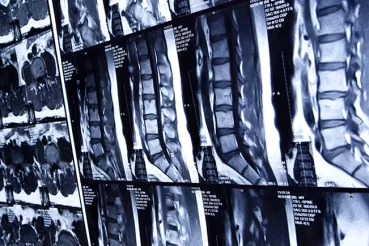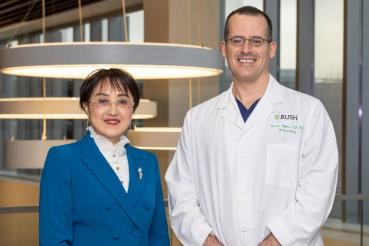Could scoliosis be the culprit behind your aching back?
For many of us, the term scoliosis conjures up images of burdensome back braces and tearful tweens.
But while you may consider scoliosis the stuff of grammar school screenings, it can actually resurface later in life or develop as we age, causing debilitating pain that inhibits everyday activities and affects your quality of life. So if you think you're too old to suffer the disease's downsides, think again.
Scoliosis: back at you
In adults with scoliosis, the curvature of the spine may have begun during the teenage years and progressed: Doctors may have initially deemed the curvature too slight to treat, the condition was never diagnosed or previous treatment didn't have a lasting impact. Or, the scoliosis may be something entirely new — a common condition that occurs as we age called degenerative scoliosis.
In these instances, facet joints — which connect vertebrae to each other and allow you to bend over to tie your shoes — slowly deteriorate with age. As this happens, they push the spine to the side, causing it to curve.
Pain in the back
"While this may not be problematic for everyone, in some cases, it can cause incapacitating pain in the back or pain that shoots down the legs. It can also cause stiffness and numbness," says Richard Fessler, MD, PhD, a neurosurgeon and researcher who specializes in treating degenerative scoliosis.
The pain's root is not the curved spine itself but, as with spinal osteoarthritis, the vertebrae bone jabbing and irritating joints and nerves.
The pain from degenerative scoliosis has been described a occurring gradually; starting off badly in the morning, getting better during the day and then becoming worse; lessening with sitting; and affecting the legs when walking or standing.
Treatment options
"Unlike scoliosis in children, the goal of treatment for degenerative scoliosis is typically to treat pain, which doesn't usually occur in kids, not straighten the spine's curve," says Christopher DeWald, MD, an orthopedic surgeon who specializes in treating scoliosis.
So if the pain is minor or intermittent, doctors may prescribe over-the-counter pain medication and observation as well as exercises to promote flexibility and strengthen the core muscles in the abdomen and back. For others, pain relief may be best achieved with epidurals or nerve blocks, injections that disrupt pain signals from travelling to your brain.
But when other pain management strategies fail and the pain interferes with daily living, doctors begin to consider surgical options to relieve pressure on the nerves and stabilize the spine.
Traditional open surgery, though, requires cutting through muscle to access problem areas. This can be particularly difficult for older adults who are often more physically vulnerable. However, thanks to minimally invasive procedures and instruments that Fessler helped pioneer, scoliosis surgery can be a less risky proposition.
Because of its benefits, minimally invasive approaches open doors of opportunity for many older patients with scoliosis.
Minimally invasive surgery: more opportunities for older adults
Rather than cutting muscle, surgeons insert a needle through muscle and spread the muscles with dilators. They then place a tube into the opening, creating an access point through which doctors can insert their surgical instruments to relieve nerve pressure or help fuse together segments of the spine, depending on the needs of the patient.
Minimally invasive scoliosis surgery takes no longer than traditional open surgery, Fessler says, and requires much shorter hospitalization. Complications are fewer, and recovery is also typically faster. Return to normal activities usually occurs in about half the time otherwise required.
"Because of its benefits, minimally invasive approaches open doors of opportunity for many older patients with scoliosis," Fessler says.




